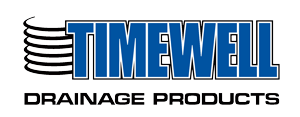Stormwater programs throughout the US rely heavily on diverse data to support resource allocation, regulatory reporting, and prioritization; but they often struggle to use those data to measure program effectiveness and guide decision-making. A key reason is that most stormwater programs are dependent on a multitude of disconnected systems for analysis and report generation.
Digital transformation is the integration of technology into all areas of an organization to automate workflows, rapidly build insights, and meet ever-changing requirements. In most industries, it is no longer optional to have your information management house in order and it will not be for long in stormwater compliance. We present city case studies that have transformed their stormwater programs with an information management overhaul. Cities have been able to not only consolidate their data storage systems, but also standardize data types, automate workflows and reports, and run advanced analytics on the fly. Cloud-based data storage means that staff are no longer tied to on-site servers and can access their data anywhere. Updates happen at the click of a button, and a robust system of record ensures that changes are trackable. A standardized data schema improved sharing and multi-purpose analytics, with the same data used for modeling water quality benefits of green stormwater infrastructure also employed to identify priorities and track progress over time.
Stormwater managers can build more effective programs with better water resource outcomes by adopting new technologies that improve how they use existing data to make decisions. Key discussion factors include: 1) Examining solution trade-offs. While all stormwater programs are unique in their own ways, software solutions shouldn’t be. Cities should assess the trade-offs of custom-built one-off solutions vs. leveraging existing solutions that are broadly scalable. All software requires maintenance, upgrades, repairs, and user support, and those ongoing costs are often overlooked with custom solutions. Enterprise solutions build annual costs into pricing structures resulting in less uncertainty about long-term costs. 2) Be open-minded to change. With digital transformation often comes changes to forms, processes, and workflows. Be willing to critically think about how to improve legacy processes that have been set in place for a long time. Staff will need to become familiar with using mobile apps to capture data. 3) Operationalizing institutional knowledge. In-house expertise are critical information sources, and much of that knowledge can be made more useful by building it into a dynamic structure that can adapt over time.
About Instructors






